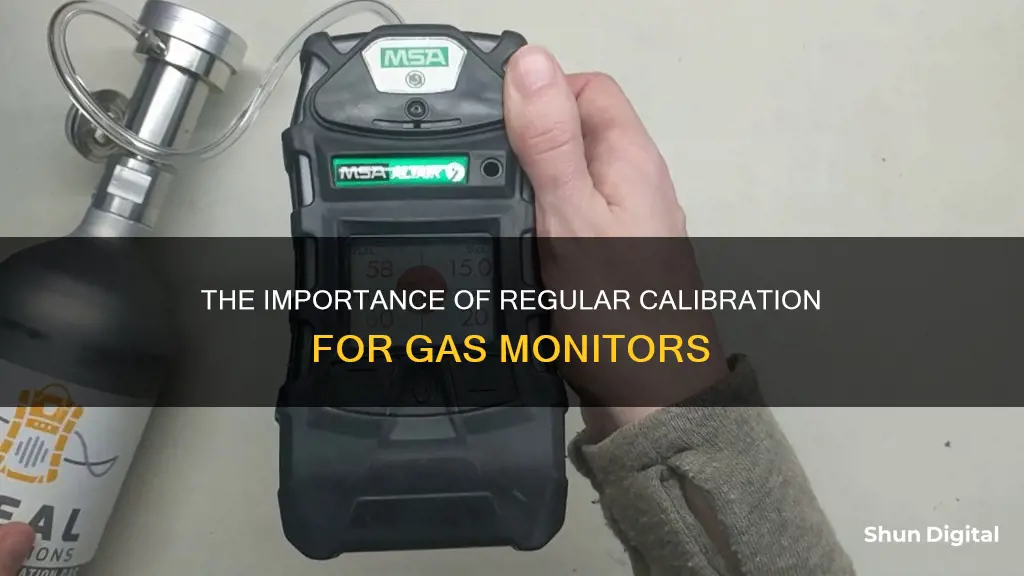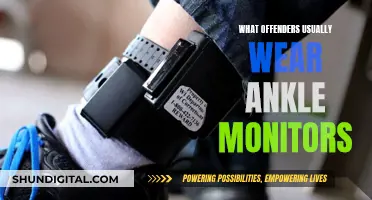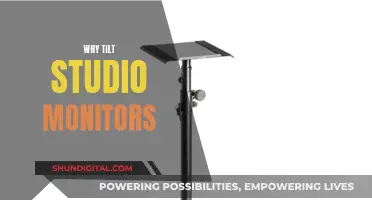
Calibrating gas monitors is essential for maintaining safety in workplaces where employees may be exposed to hazardous gases. Gas detectors can be difficult to maintain, especially when frequent calibration is required. Calibration is necessary to ensure the accuracy of gas detectors, which can drift from their original calibration due to environmental conditions, sensor aging, or contamination. This drift can lead to inaccurate readings, putting workers at risk of exposure to toxic gases, oxygen deficiency, or combustible gases. While the ideal scenario is to calibrate gas monitors before each use, this is not always practical, especially for teams with a large number of devices. Therefore, it is crucial to understand the factors that determine the calibration frequency, including the type of gas detector, the environment it operates in, and the manufacturer's guidelines.
| Characteristics | Values |
|---|---|
| How often to calibrate | According to OSHA, it is best to calibrate before each use. However, this is not always practical. It is recommended to calibrate based on the manufacturer's guidelines, but these can be misleading. |
| Calibration cost | A full calibration for a 4-gas monitor costs around $6.60 for the calibration gas and takes about 5 minutes. |
| Calibration drift | Calibration drift is the change in electrical signal between the sensor and the monitor since its last calibration. This is unavoidable and occurs due to factors such as age, extreme environmental conditions, sensor poisoning, and monitor abuse. |
| Bump test | A bump test is a quick check to ensure the device responds to a gas concentration. It is recommended to perform a bump test before each use. If the bump test fails, a full calibration is required. |
| Calibration frequency | The frequency of calibration depends on the device, environment, and manufacturer guidelines. Calibration may be required monthly, quarterly, or every six months to a year. |
What You'll Learn

Calibration requirements
The calibration requirements for gas monitors depend on several factors, including the type of gas detector, the manufacturer's guidelines, the environment in which it operates, and the specific device in question. Here are some detailed instructions and recommendations to ensure proper calibration:
- It is recommended to calibrate gas monitors before each use to ensure accurate results. This is known as manual calibration and involves reconfiguring each device by hand instead of relying on automated systems.
- The Occupational Safety and Health Administration (OSHA) recommends calibrating gas detectors before each use. However, this may not be practical for companies with a large number of monitors.
- In the absence of specific OSHA guidelines, it is generally advised to follow the manufacturer's recommendations for calibration. However, these guidelines can sometimes be inconsistent or unclear.
- To address the challenges of inconsistent manufacturer guidelines, the International Safety Equipment Association (ISEA) recommends, at a minimum, verifying sensor accuracy before each day's use. This can be done through bump testing, which involves exposing the gas monitor to the gases it is supposed to detect and ensuring they are registered.
- Bump testing is a quick method to ensure the gas monitor is functioning properly. If the bump test is successful, a full calibration may not be necessary. However, if the bump test fails, a full calibration is required.
- Full calibration involves adjusting the instrument's reading to match a known concentration of test gas. This process typically takes a few minutes and requires only a few button presses.
- The frequency of calibration can vary. While some sources recommend monthly calibrations, others suggest that calibrating every six to twelve months is sufficient.
- The environment in which the gas monitor operates can also impact the calibration requirements. In hazardous environments, such as oil refineries, more frequent calibration (monthly or quarterly) may be necessary.
- Regular calibration is essential to maintaining the accuracy of gas monitors and ensuring the safety of workers. Over time, gas detectors can drift from their original calibration due to environmental conditions, sensor aging, or contamination.
- Calibration also helps extend the lifespan of gas detectors and reduces long-term costs by preventing expensive breakdowns or emergencies.
- It is crucial to use the correct calibration gas recommended by the manufacturer. Using incorrect or impure calibration gas can compromise the accuracy and safety of the device.
- The calibration process should be performed in an environment similar to the working conditions to ensure accurate results.
Identifying Monitor Lizards: Sex Determination Techniques and Tricks
You may want to see also

Calibration procedures
Step 1: Preparation
Ensure you have the correct calibration gas as per the manufacturer's recommendations. The gas concentration should match the specifications for your detector model. Also, ensure the environment is free from contaminants that could interfere with the calibration.
Step 2: Safety Checks
Put on the necessary personal protective equipment (PPE), such as gloves, goggles, and respiratory protection. Check the detector and calibration equipment for any leaks or issues to avoid exposure to hazardous gases.
Step 3: Prepare the Gas Detector
Switch on the gas detector and allow it to warm up as per the manufacturer's instructions. Check that the sensors and batteries are functional. If the battery is low, charge it before proceeding.
Step 4: Connect Calibration Equipment
Use a calibration kit or docking station. Connect the calibration gas cylinder to the gas detector through the appropriate inlet and secure the connection to prevent leaks. Follow the manufacturer's instructions for the correct setup and initiation of the calibration gas flow.
Step 5: Run the Calibration Test
Once the calibration gas is flowing, the detector will measure the gas concentration. Compare the sensor readings with the known concentration of the calibration gas. If the readings match, the calibration is successful. If they do not match, the detector will adjust the sensor to align with the gas concentration.
Step 6: Validate Calibration Accuracy
After calibration, validate the accuracy of the gas detector's sensors by running a post-calibration test using a known gas concentration. If the readings are incorrect, recalibrate or inspect the device for faults.
Step 7: Finalize Calibration
Once calibration is successful, record the results for future reference. Most calibration systems provide an electronic record, which is useful for audits and compliance documentation. Ensure the gas detector is in optimal condition before returning it to service.
Additionally, it is important to note that bump testing is different from full calibration. Bump testing is a quick check to ensure the device responds to a gas concentration, but it does not adjust the accuracy. A full calibration, on the other hand, involves adjusting the instrument's reading to coincide with a known concentration of test gas. Bump testing can be done more frequently, but it does not replace the need for regular full calibrations.
Connecting Scarlett 2i2 to Studio Monitors: A Comprehensive Guide
You may want to see also

Calibration frequency
Calibration is critical to maintaining the accuracy of gas monitors and ensuring safety in environments such as oil fields, refineries, and construction sites. The calibration frequency depends on various factors, including the device, the environment, and manufacturer guidelines.
The Occupational Safety and Health Administration (OSHA) recommends calibrating gas detectors before each use. However, this may not be practical for teams with a large number of devices. In such cases, it is advisable to follow the manufacturer's guidelines, although these can sometimes be unclear or inconsistent. For example, the same manufacturer may suggest different calibration intervals for different models of gas monitors, even if they use the same sensors.
To address this, the International Safety Equipment Association (ISEA) recommends, at a minimum, verifying sensor accuracy before each day's use. This typically involves performing a "bump test," which exposes the monitor to the gas(es) it is intended to detect and ensures that it registers a response. If the bump test is unsuccessful, a full calibration is required.
In practice, the calibration frequency can vary depending on usage patterns. Companies that use their monitors infrequently, such as every 30 days or less, may opt to calibrate each time. On the other hand, those that use their devices daily might calibrate less frequently, such as every 4-6 months, but perform bump tests more often (every couple of weeks).
Additionally, certain applications may require more frequent calibration. For example, if the readings from a gas monitor are intended to hold up in court as incontrovertible data, calibration is necessary both before and immediately after each use.
Overall, regular calibration is essential to maintaining the accuracy and reliability of gas monitors, especially in hazardous environments. While it may be a challenging task to schedule and perform, it is a critical aspect of ensuring safety and preventing accidents and injuries.
Troubleshooting Guide: Rebooting Your ASUS Monitor and G-SYNC
You may want to see also

Calibration cost
Calibration is an essential aspect of maintaining gas monitors, but it can be challenging to find the time amid busy schedules. While calibration procedures are not particularly complex or time-consuming, requiring just a few minutes and button presses, neglecting routine maintenance can have severe consequences. Gas detectors safeguard against toxic gases, oxygen deficiency, and combustible gases, and failing to calibrate them can lead to inaccurate readings, endangering workers.
The calibration cost for gas monitors varies depending on the type of detector and the service provider. Some companies charge a standard rate for calibration services, such as $85 for a four-gas detector calibration, $35 for a single-gas detector, and $85 for exotic gases like Cl2 or NO2. Repairs are charged separately at an hourly rate, plus the cost of parts.
For companies with a large number of gas monitors, the cost of calibration can quickly add up. In such cases, it may be more cost-effective to invest in a docking station or calibration station, which can automate the calibration process for multiple devices. These stations can also perform other functions, such as bump testing, charging, and data downloading.
Another cost-saving option is to calibrate gas monitors in-house. This approach gives companies full control over the process and quality assurance. However, it requires purchasing the necessary equipment, such as test gas cylinders, regulators, gas tubing, and protective gear. Additionally, companies must ensure they have the expertise to perform calibrations correctly and safely.
While the financial investment in calibration is important, the primary goal is to ensure the accuracy and reliability of gas monitors. Calibration procedures help adjust sensors to accurately detect the presence and concentration of gases. This process involves exposing the gas detector to known gas concentrations and comparing the readings to known values, making any necessary adjustments to improve accuracy.
In conclusion, the cost of calibrating gas monitors includes not only the financial expense but also the time and resources invested in maintaining these life-saving devices. By prioritising calibration, companies can enhance workplace safety, comply with regulations, and ensure the well-being of their employees.
CCleaner's Monitoring Feature: Is It Still Useful?
You may want to see also

Calibration tools
- Calibration gas cylinder: This contains a known concentration of test gas that is used to compare with the sensor's response. Ensure the gas is not expired and is compatible with your detector's sensors.
- Regulator: This controls the flow of calibration gas from the cylinder.
- Calibration cap or adapter: Specific to your gas detector model, this allows you to connect the regulator and tubing to the gas detector.
- Tubing: Appropriate tubing is necessary to connect the regulator to the gas detector securely and leak-free.
- Personal protective equipment: Gloves and safety glasses are important to wear during the calibration process to ensure your safety.
- Well-ventilated area: Performing the calibration in a well-ventilated space guarantees safety by allowing any leaked gases to dissipate.
- Gas detector docking station: For automated calibration, a docking station can be used. This calibrates multiple monitors simultaneously and also downloads datalogs, updates settings, and firmware.
Additionally, you will need access to the gas detector's user manual to refer to specific instructions on sensor cleaning, maintenance, and calibration steps.
It is important to note that the calibration process may vary slightly depending on the make and model of your gas detector, so always refer to the manufacturer's guidelines for proper calibration procedures.
Powering Studio Monitors: A Comprehensive Guide
You may want to see also







